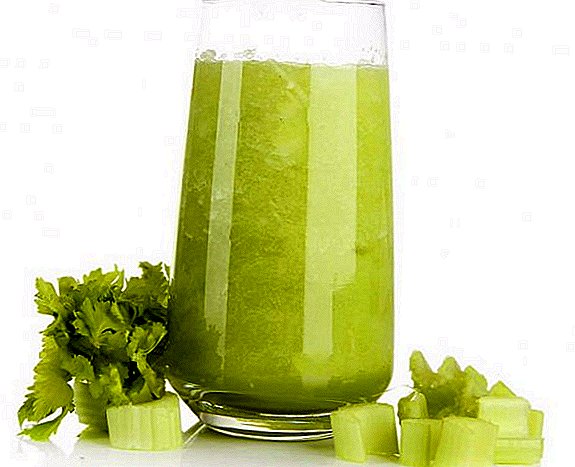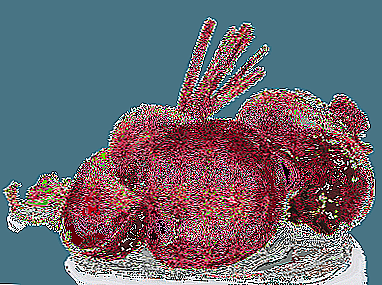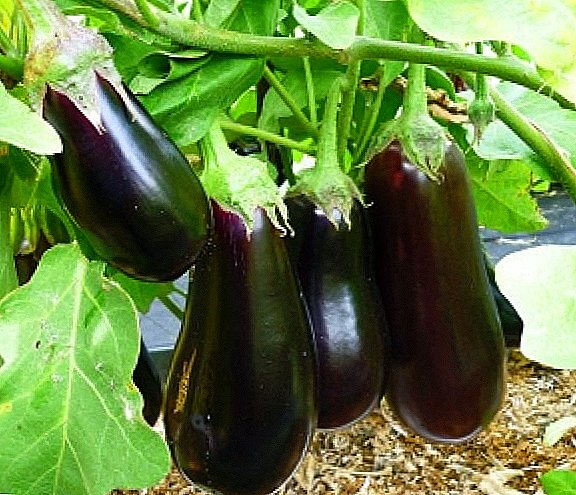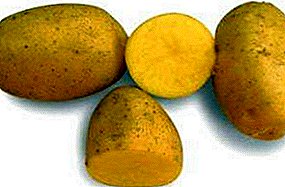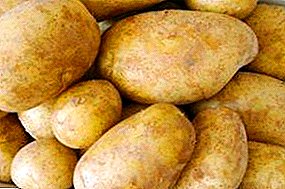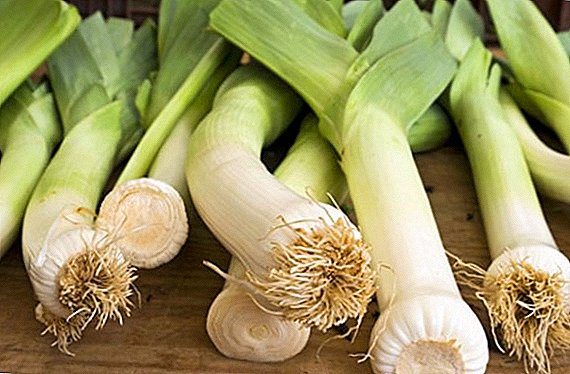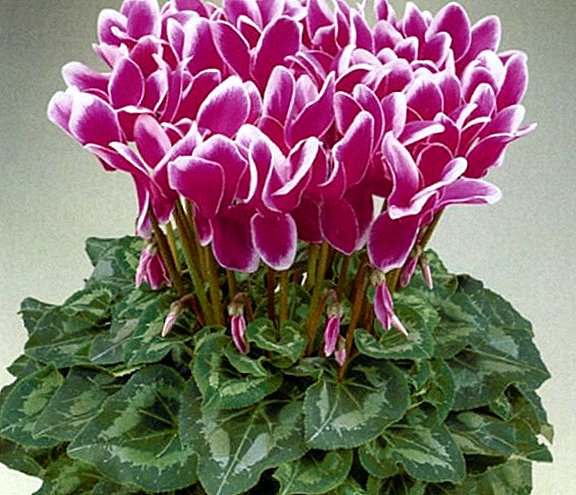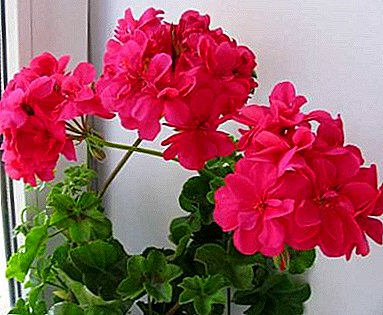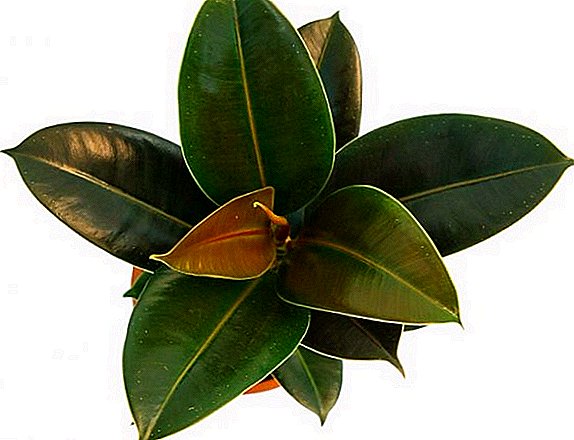 Ephedra horsetailwhich is also called conifer and mountain ephedra - a unique medicinal plant that helps fight lung diseases. Where to look for it and how to use it for medical purposes, we will learn further.
Ephedra horsetailwhich is also called conifer and mountain ephedra - a unique medicinal plant that helps fight lung diseases. Where to look for it and how to use it for medical purposes, we will learn further.
Description
Ephedra translated from Greek as "seat". The name was given because of the appearance of the plant and the lack of leaves on the stem. It is easy to recognize a plant - a dense scattering of branches up to 1.5 m in length on a shrub gives it a ball-like shape. The stem on which they hold is the hardest, lumbering part of the shrub of gray.
The branches themselves are smooth, thin, articulate and rather long - up to 2 cm. They are present on the plant and the leaves are only 2, they grow from the root opposite each other, covered with small scales, at the ends have a triangular shape.  Perennial can multiply vegetatively, in nature, the plant starts root shoots. The ephedra has single-flowered female and male spikelets. Ephedra blossoms from May to June, after which small round orange or red fruits appear. These cones are edible, fleshy and sweet.
Perennial can multiply vegetatively, in nature, the plant starts root shoots. The ephedra has single-flowered female and male spikelets. Ephedra blossoms from May to June, after which small round orange or red fruits appear. These cones are edible, fleshy and sweet.
Read more on the beneficial properties and medicinal use of herbs such as: Zubrovka, sedge, woodlouse, canoper, feather grass, black cohosh and stevia.
This bushy thick bush loves the highlands. It is found in the subalpine, mountain-forest and mountain-steppe belts. You can find it in the Caucasus, south-east Russia, in the west of Siberia, in Central Asia, China and Mongolia. Bushes grow among stones and rubble mounds at a height of at least a thousand meters above sea level.
A powerful root system holds them in such soil. Ephedra prefers open sunny terrain, where it can grow extensively.
Ephedra horsetail has other species names - average and intermediate. She can also be called kuzmichevoy grass - in honor of the popularizer of the medicinal plant Fedor Kuz'michev.  In eastern medicine, it began to be used several thousand years ago, but it was not until the 19th century that medicinal properties began to be seriously studied.
In eastern medicine, it began to be used several thousand years ago, but it was not until the 19th century that medicinal properties began to be seriously studied.
Did you know? Ash ephedra stalks in Asia are used as an additive to chewing tobacco.
Composition and nutritional value
The chemical composition of the ephedra distinguish the following elements:
- alkaloids;
- flavonoids;
- flavones;
- tetramethylpyrazine;
- pyrocatechin;
- flobafen;
- tannins;
- amino acids;
- ascorbic acid (vitamin C).
Most alkaloids are concentrated in young branches, the least - in the fruit. More than 60% of alkaloids are ephedrine - a medicinal substance that acts on the principle of adrenaline. It is this component that makes shrubs valuable for the treatment of lung diseases.  Among the macro-and microelements can be distinguished potassium, calcium, magnesium, zinc, manganese, lead, iron.
Among the macro-and microelements can be distinguished potassium, calcium, magnesium, zinc, manganese, lead, iron.
Coniferous smell in the plant due to the terpenes - essential oils.
Did you know? Ephedrine was discovered in the Chinese plant "ma-huang" in 1887 - and only 40 years later they began to guess about its properties.
Beneficial features
Ephedra has a relaxing effect on the body - it dilates the coronary vessels and the vessels of the lungs, and at the same time increases blood pressure. Tones and stimulates the respiratory system - affects the muscles, blood vessels and starts the work of the respiratory organs. Therefore, it is part of asthma medications.
Relieves allergic reactions and their negative effects on the lungs - simplifies breathing during an abscess.
The plant is able to expand the pupils, it is useful for glaucoma.
Due to its absorbing properties, a decoction of it can help with drug poisoning.
Application
Ephedra is a part of many medicines for asthma, bronchitis, aerosol preparations for allergies - teofedrin, efatin, solutan, escodol, antishock drugs.
Separately on sale you can find ampoule ephedrine hydrochloride, it is also in tablets.  Perennial is used for such purposes:
Perennial is used for such purposes:
- to stimulate and normalize the work of the respiratory center - ephedrine penetrates the blood-brain barrier and stimulates adrenoreceptors, which stimulates the respiratory system, relaxes the muscles of the bronchi and thus facilitates the flow of allergic reactions and obstructive diseases, deepens breathing
- to stimulate the work of the central nervous system - the main impact on the cortical departments, is also used to treat enuresis;
- to improve the functioning of the heart, sinoauricular and atrioventricular blocks with a rare sinus rhythm are eliminated with the help of a plant;
Also on the cardiovascular system have a beneficial effect: hellebore, calendula, oregano, apricot, red currant and green apples.
- to increase blood pressure;
- to improve blood flow in the liver;
- when restoring the body after sepsis, operations, complications from diseases;
- to enhance the stroke volume of the heart;
- in some cases - to accelerate fibrinolysis, vasoconstriction, hypothermia call.
Often used in folk medicine - for getting rid of rheumatism, for the treatment of gastrointestinal tract, allergies, rhinitis, headaches.
For home treatment infusions, decoctions and teas on the grass are used:
- For medicinal broth, pour two glasses of hot water with 1 tablespoon of dried herbs. Boil the liquid until half evaporate. Next, wait until cooling and strain through cheesecloth. Drink the finished drink in a teaspoon up to 3 times a day.
- The infusion is made from a glass of boiling water and 1 teaspoon of the plant. The output is a daily dose of medication.
- For tea, we take 1 teaspoon of herbs and pour two cups of boiling water. When the drink is infused and a little cool, you can drink it in half a cup up to 4 times a day. This will help with colds, bronchitis and low blood pressure.
Important! The plant is poisonous - in toxic doses it can cause over-stimulation of the central nervous system and convulsions. Therefore, even in a medicinal form, it can be taken after consultation with the doctor.
Contraindications and harm
First of all, the dosage of drugs that contain a plant should not be exceeded. Specific contraindications:
- pregnancy and breastfeeding;
- insomnia;
- diabetes;
- tachycardia;
- hypertensive heart disease;
- severe damage to the heart muscles;
- personal intolerance to the drug;
- should not be used by children.
 It is also undesirable to use decoctions and infusions for the night - the herb will excite the nervous system and cause insomnia. If the doses are divided throughout the day, the last dose should be at least 3 hours before bedtime.
It is also undesirable to use decoctions and infusions for the night - the herb will excite the nervous system and cause insomnia. If the doses are divided throughout the day, the last dose should be at least 3 hours before bedtime.Important! After using the medication, make sure that you do not have side reactions - nausea, vomiting, diarrhea, trembling limbs, poor appetite. In case of overdose - immediately flush the stomach, then consult a doctor.
Stocking
As the medicine, the ephedra is used entirely, only the roots are not suitable. The most useful - green twigs. Autumn and winter are best for gathering raw materials - then the grass is richer in nutrients. From May to July it makes no sense to collect the plant because of the low content of alkaloids in it.
Basic rules for procurement:
- dry for no more than 6 days in the sun and 4 at home - otherwise the alkaloids will disappear;
- can be dried in special dryers or in an oven at 30 ° C;
- if there is no sun, it can be dried in a warm room - in the attic, in the kitchen;
- branches must be decomposed into fabrics individually, one near the other, so that they do not overlap;
- Ready medicinal herbs should be stored in an airtight container so that animals do not start there.
The plant is not very common, so it can only be collected in certain places. In addition, you should not do harvesting every year from one place - otherwise the grass will die out there.
In general, it will not be difficult to make harvesting, but you can also buy ready-made dried grass.  So, we found that ephedra can be very useful in many diseases; first of all, preparations from it are indicated for asthmatics and people with lung diseases.
So, we found that ephedra can be very useful in many diseases; first of all, preparations from it are indicated for asthmatics and people with lung diseases.
Asthma can also be treated with purslane, celandine, rose, aloe, horseradish and peony.
However, the use of the plant is necessary only under the supervision of a physician to avoid undesirable consequences.


